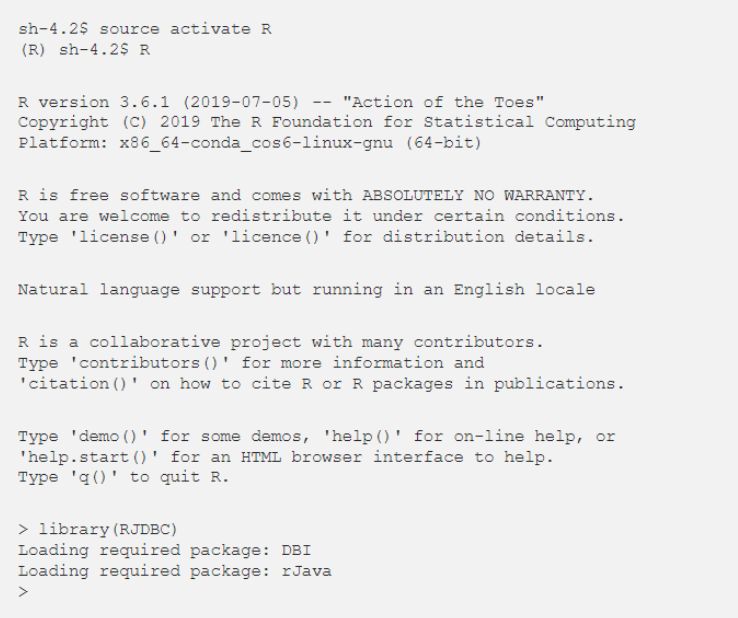RJDBC is a package executing DBI in R established on JDBC. It enables the usage of any DBMS in R for the JDBC user interface. The only situation is working with Java and a JDBC driver for the database engine to access. With conda, you could easily install the R programming language and over 6000 commonly used R programming packages for data science. You could also create and share your own custom R packages.
Whenever working on an R kernel, you could use the package installer of RJDBC to make a JDBC assembly to your databases. You might be selected to install a Sage Maker Notebook, for instance of this post.
You could achieve such a thing by installing the package through Conda, both with an internet connection (online) or without (offline). The latest RJDBC getaway is available from CRAN; use: You can use install. Packages (“R JDBC”, dep=TRUE).
Online
You can use the terminal to install rjdbc in the R environment.
 The latest development build is always available on the R Forge files page or SVN. The primary documentation is the R man pages; an example follows below: library (R JDBC).
The latest development build is always available on the R Forge files page or SVN. The primary documentation is the R man pages; an example follows below: library (R JDBC).
Offline
Download the required dependencies on a machine with internet access. You can use 64-bit Linux versions.
– rjdbc
– rjava
– openjdk
You can upload the files from your local machine to the Notebook Instance without internet access.
Use Conda to install the packages from the *.tar.bz2 files.
 Test the package in R with the library (RJDBC).
Test the package in R with the library (RJDBC).
Wrapping Up
We hope the above-mentioned tips and tricks worked for you. Thank you for giving your time to read this blog! Hit clap if it worked for you. The R Essentials bundle brings approximately 200 of the most popular R packages for data science, which include the IRKernel, shiny, dplyr, ggplot2, caret, and nnet. It is used as an example in the following guides.


